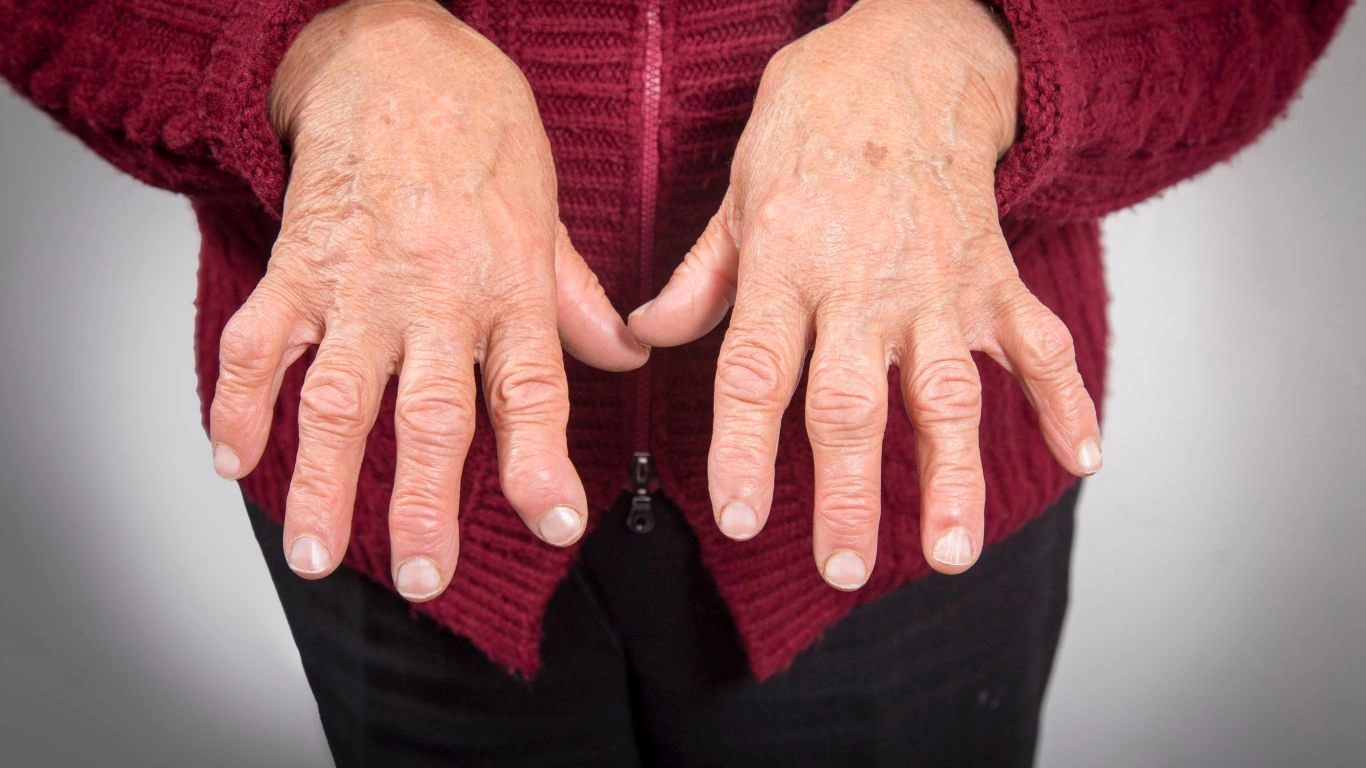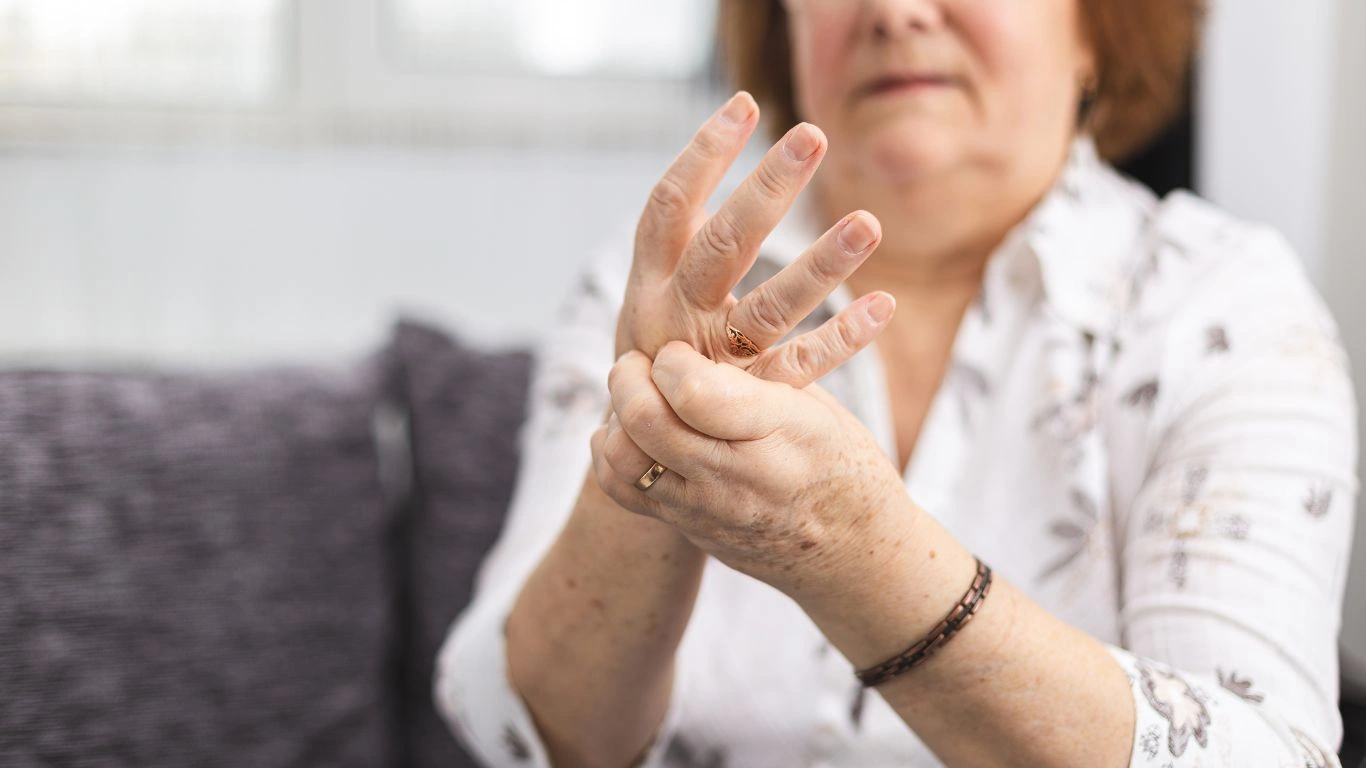Best Herbal Remedies for Rheumatoid Arthritis Relief That Actually Work
If you’re anything like the patients I see in my Rheumatology practice every week, you’ve probably asked at some point: “Are there *natural* ways to feel better?” And I get it. Living with RA (Rheumatoid Arthritis) isn’t just about swollen joints—it’s the fatigue, the stiffness, and that constant, nagging ache that just won’t quit. That’s why more people are turning to herbal remedies for rheumatoid arthritis relief as a way to support their conventional treatments. And spoiler alert: some of these remedies really do offer noticeable relief—when used wisely. Let’s chat about what works, what doesn’t, and what to watch out for.
Understanding Rheumatoid Arthritis: Beyond the Joints

RA isn’t your average wear-and-tear arthritis. Nope, it’s a full-on autoimmune condition where your immune system mistakenly attacks your joints—especially in the hands, wrists, knees, and feet. It can even affect your lungs, skin, eyes, and blood vessels. That’s why treatment usually involves more than just pain relief—it’s about managing inflammation and preventing long-term joint damage.
But here’s the thing. While DMARDs (Disease-Modifying Anti-Rheumatic Drugs) and biologics are amazing and have changed the game, they’re not always enough. Some of my patients can’t tolerate certain meds. Others just want to explore complementary options. That’s where herbal support comes in.
Why Herbal Remedies? A Closer Look

I’m not here to sell you snake oil—I’m a nurse practitioner, after all. But I’ve seen firsthand how certain herbal remedies can help reduce inflammation, ease joint pain, and improve overall quality of life for folks with RA. These aren’t cure-alls, and they’re definitely not replacements for prescribed medications, but they can be valuable tools when used safely and mindfully.
The Science Behind the Green
Let’s bust a myth: herbal medicine isn’t just old wives’ tales. A lot of these herbs have been studied in clinical trials. Turmeric, for example, has solid anti-inflammatory properties thanks to its active compound, curcumin. Boswellia (aka Indian frankincense)? Also anti-inflammatory. Some studies even suggest it might work similarly to NSAIDs, but with fewer side effects. That’s a win in my book.
Commonly Used Herbal Remedies for Rheumatoid Arthritis Relief
Here’s a list of some of the herbal remedies I’ve discussed with patients—and in some cases, even used myself for aches and joint tension:
- Turmeric (Curcuma longa): Probably the most well-known herbal supplement for joint inflammation. Best absorbed when taken with black pepper (look for “BioPerine” on the label).
- Ginger: Not just for nausea! Ginger’s anti-inflammatory compounds—called gingerols—have been linked to reduced muscle pain and stiffness.
- Boswellia serrata: This one’s gaining traction. Some folks call it “nature’s ibuprofen,” and I’ve seen promising results in patients looking for something gentle on the stomach.
- Devil’s Claw: Native to Southern Africa, this root has been used traditionally for centuries. It may help ease back pain and joint discomfort.
- Willow Bark: Contains salicin, a compound similar to aspirin. Not for everyone (especially if you’re sensitive to NSAIDs), but worth discussing with your provider.
What to Consider Before Trying Herbal Remedies

Talk to Your Rheumatology Team (Seriously)
I can’t stress this enough—just because something is “natural” doesn’t mean it’s automatically safe for everyone. Some herbs can interact with medications you might already be taking, like methotrexate or biologics. And remember, not all supplements are created equal. Quality matters.
Whenever one of my patients is curious about trying herbs, I always suggest we walk through it together. I’ll check for any red flags, review their medication list, and make sure they’re choosing a reputable brand. Because the last thing we want is for a supplement to undo the hard work their prescriptions are doing.
What to Look for on Labels
Unfortunately, the supplement world isn’t as tightly regulated as pharmaceuticals. So, you’ve got to be a bit of a detective:
- Choose brands that have been independently tested by third parties like USP, NSF, or ConsumerLab.
- Look for the actual amount of the active compound—some products may say “turmeric” but have very little curcumin.
- Avoid mystery blends. If it says “proprietary blend” without actual dosages, that’s a red flag.
And hey, if you’re ever unsure? Snap a pic and bring it to your next visit. I’ve reviewed labels with more patients than I can count—it’s part of the job, and honestly, I kind of love it.
Final Thoughts (For Now)
Herbs aren’t a magic fix, but for many people dealing with RA, they can be part of a well-rounded toolkit. Whether it’s ginger tea in the morning or a turmeric capsule alongside your usual meds, these remedies can offer support, comfort, and a sense of control over your health journey. And from one healthcare provider to another human being navigating chronic illness—I think that matters a lot.
Herbal Remedies That Deserve a Second Look

So, we’ve covered a few of the “popular” herbs already, but there are some lesser-known plant-based options that patients often overlook. I’ve seen a few of these make a noticeable difference in daily symptoms—especially when used consistently and in combo with good lifestyle habits.
Stinging Nettle (Urtica dioica)
Okay, this one sounds a little intimidating—who wants to mess with something called “stinging” anything, right? But when it’s dried and prepared correctly, stinging nettle actually contains anti-inflammatory compounds that can reduce cytokines, which are those little messengers responsible for triggering inflammation. Some of my patients use it in tea form or as a capsule. It’s also rich in vitamins and minerals, so there’s a nutritional bonus too.
Cat’s Claw (Uncaria tomentosa)
This vine is native to the Amazon, and no—it has nothing to do with actual cats. It’s been used traditionally to treat inflammation and immune issues. Early studies suggest it may reduce joint pain and swelling, especially in people with autoimmune conditions like RA. I always advise checking liver enzymes periodically if someone chooses to try this one, just to be safe.
Evening Primrose Oil
This one’s technically not an herb—it’s a fatty acid supplement derived from a wildflower. But it deserves a spot on this list. The magic here is gamma-linolenic acid (GLA), which may help modulate the immune response and reduce morning stiffness in RA patients. I’ve had patients tell me it helped them “loosen up” more quickly in the morning, especially when paired with gentle stretching.
Food as Herbal Medicine: Eat Your Relief

Let me tell you something I’ve learned from both clinical experience and countless conversations in the exam room—what you eat matters more than most people realize. Inflammation starts in the gut for many of us, and certain herbs can work their magic simply by being incorporated into meals, not just taken as pills or tinctures.
Everyday Kitchen Staples with Anti-Inflammatory Punch
- Garlic: Not just for warding off vampires. Garlic contains diallyl disulfide, which has shown anti-arthritic activity in some studies. Raw or lightly cooked is best.
- Cinnamon: Some small studies suggest that cinnamon may help reduce joint swelling. I recommend adding a dash to oatmeal or smoothies—it’s tasty and therapeutic.
- Green tea: Not technically a herb? Maybe. But it’s loaded with EGCG, a compound known to reduce inflammation and slow cartilage destruction. Hot tip: drink it in the afternoon when you feel that post-lunch dip.
Honestly, some of the best anti-inflammatory habits start in the kitchen. One of my patients started cooking with turmeric, ginger, and garlic daily and swears it helped cut her flare-ups in half. It’s anecdotal, sure—but when a patient feels better, that counts too.
Real Talk: What I’ve Seen Work (and What Hasn’t)

After years in Rheumatology, you learn to spot patterns. I’ve had plenty of patients walk in, clutching a grocery bag full of supplements, hoping one of them is the miracle fix. Unfortunately, there’s no magic pill—or leaf—for RA. But that doesn’t mean herbal remedies are a waste of time.
Here’s what I’ve noticed:
- Consistency matters. Herbs are not one-and-done. They’re more like marathon runners than sprinters. You have to give them time—usually 4 to 8 weeks—to show full effects.
- Less is sometimes more. Combining too many herbs at once? That’s when things get complicated. I usually suggest trying one or two at a time to monitor effects.
- Track your progress. A simple notebook or notes app where you jot down pain levels, stiffness, and energy each day can help pinpoint if something is working—or not.
Also—and this is a big one—managing expectations is key. I’ve had patients feel frustrated when a supplement doesn’t provide total relief. But if it helps reduce the number of bad days, or makes mornings a little less stiff? That’s a win in my book. Sometimes it’s about stacking small improvements that lead to big changes.
What the Research Says (So Far)
More and more studies are exploring herbal remedies for rheumatoid arthritis relief, which is honestly so exciting. While some research is still in early stages or limited by small sample sizes, there’s promising data on several of the herbs we’ve discussed:
- Turmeric: Multiple randomized trials have shown significant improvements in joint swelling and morning stiffness, particularly when combined with piperine.
- Boswellia: Some trials suggest its effect is comparable to NSAIDs, but with fewer reported GI side effects.
- Ginger: A 2020 review suggested ginger supplementation may help with pain management in inflammatory conditions, including RA.
- Cat’s Claw: Early findings are encouraging, but more robust human trials are needed.
Bottom line? There’s a growing body of evidence, but we still need larger, longer-term studies to make official clinical recommendations. That said, I’ve always been a fan of blending the best of modern medicine with nature’s wisdom—as long as it’s done safely.
Patient Stories Worth Sharing
I can’t name names, of course, but one of my long-time patients—let’s call her “Janice”—was the ultimate skeptic when we first talked about turmeric. She called it “that yellow stuff in curry” and raised an eyebrow when I mentioned trying it. Fast forward six months: she’s taking it regularly (with her rheumatologist’s okay) and has reduced her ibuprofen use by half.
Another patient added ginger to her smoothies, and she told me something that stuck with me: “It’s not a night-and-day change, but I feel less stuck in the mornings.” That kind of feedback is powerful. It reminds me that sometimes it’s not about fixing everything—it’s about making daily life a little more manageable.
Integrating Herbal Remedies Into a Real-Life RA Routine

By now, we’ve gone through a wide range of herbal remedies for rheumatoid arthritis relief, but let’s talk about something most people struggle with: actually making it part of their daily life. Because knowing what helps is one thing—working it into your routine without getting overwhelmed? That’s the real trick.
Whenever I chat with patients about adding herbs or supplements, I always suggest baby steps. Pick one or two things that feel doable. Don’t overhaul your whole life overnight. For instance, if you’re curious about turmeric, start with a capsule in the morning or add a pinch to your eggs. Want to try ginger? Throw a slice into your tea or smoothie. Easy wins build momentum.
Pairing Herbs with Lifestyle Habits
This is something I’ve seen work wonders—pairing an herbal remedy with a healthy habit. It reinforces consistency. Here are a few examples:
- Morning stiffness? Try a cup of warm green tea with turmeric and black pepper before stretching.
- Post-workout soreness? Use a ginger balm or essential oil massage along with a hot compress.
- Evening primrose oil? Take it right after brushing your teeth—tie it to an existing habit.
One of my patients keeps a tiny spice rack next to her coffee machine—turmeric, cinnamon, ginger. She calls it her “RA relief station.” I love that so much because it’s simple, it’s intentional, and it works for her lifestyle.
When to Be Cautious with Herbal Remedies

Now here’s the flip side—and this is something I always emphasize. Herbal doesn’t mean harmless. I’ve had patients wind up with liver issues or blood pressure spikes because they didn’t realize a supplement was interacting with their meds.
Red Flags to Watch Out For
- Mixing with blood thinners: Herbs like garlic, ginger, and ginkgo can thin the blood even further. If you’re on warfarin or similar meds, talk to your provider first.
- Autoimmune stimulation: Some herbs boost immune function (like echinacea), which might actually worsen autoimmune flares for some folks.
- Digestive upset: Not every stomach tolerates herbs well. I’ve had people get bloated or nauseous from turmeric or Boswellia. Start small and monitor.
And please—skip anything that promises “instant arthritis reversal” or “miracle joint healing.” If it sounds too good to be true, it probably is. Stick with herbs backed by science, used in moderation, and always loop in your healthcare provider before starting something new.
How to Talk to Your Provider About Herbs
This one’s important. I’ve had patients hesitate to bring up herbal remedies because they worry their doc will roll their eyes or shut it down. But here’s the thing—you deserve to have that conversation. It’s your body, your health, and your plan.
Here’s how to bring it up:
- Make a list of any herbs or supplements you’re currently using or considering.
- Note any changes you’ve noticed in symptoms (good or bad) since starting them.
- Ask if any could interact with your current RA medications or health conditions.
As a provider, I actually want to know what else my patients are using. It helps me give safer, more tailored care. And if your provider doesn’t seem open to that? It might be time to find someone who sees the value in integrative health.
Final Thoughts: It’s About Personal Empowerment
If there’s one thing I hope you take away from this article, it’s this: finding the right combination of herbal remedies, medications, movement, nutrition, and rest is deeply personal. There’s no one-size-fits-all plan for RA. But small changes, practiced consistently, can make a big impact.
Whether you’re steeping a mug of nettle tea, sprinkling cinnamon in your coffee, or testing out Boswellia with your morning supplements—you’re showing up for yourself. And that matters. As someone who works with RA patients daily, I see the difference that mindful, educated choices make. And I’m here for it.
References
Disclaimer
This article is intended for informational purposes only and does not constitute medical advice. Always consult with a licensed healthcare provider before starting any new herbal supplements, especially if you have a chronic condition like rheumatoid arthritis or are taking prescribed medications. Individual results may vary.

Tarra Nugroho is a dedicated Nurse Practitioner with a strong foundation in family and preventive care. She brings both compassion and clinical expertise to her practice, focusing on patient-centered care and health education. As a contributor to Healthusias.com, Tarra translates medical knowledge into clear, empowering articles on topics like women’s health, chronic disease management, and lifestyle medicine. Her mission is simple: help people feel seen, heard, and informed—both in the clinic and through the content she creates. When she’s not caring for patients, Tarra enjoys weekend hikes, plant-based cooking, and curling up with a good health podcast.






